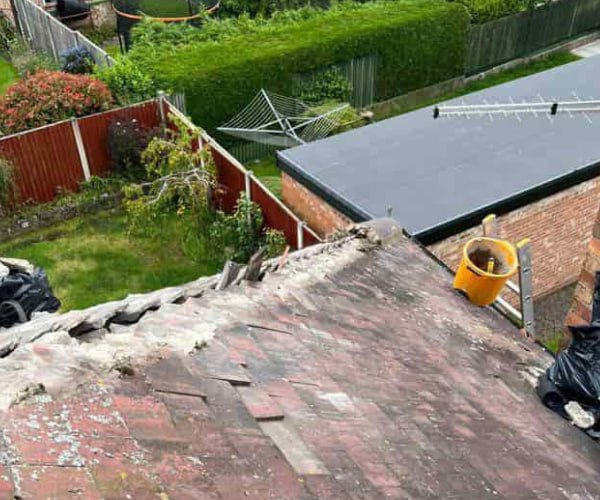Common Roofing Issues: Slipped Tiles and Their Impact
Introduction: Your roof serves as the first line of defence against the elements, shielding your home from rain, wind, and harsh weather conditions. However, various issues can arise over time that compromise its integrity and effectiveness. One of the most common roofing problems is slipped tiles. In this blog post, SM Roofing Hatfield will shed light on the impact of slipped tiles and provide insights into addressing this issue promptly.
- Understanding Slipped Tiles:
a. Definition: Slipped tiles occur when roof tiles or slates shift from their original position, leaving gaps or exposing the underlying roof structure.
b. Causes: Slipped tiles can result from various factors, including age, weather conditions, poor installation, lack of maintenance, or underlying structural issues. - Signs of Slipped Tiles:
a. Water Leakage: The primary indicator of slipped tiles is water leakage, usually noticed as damp patches, stains, or water dripping from the ceiling.
b. Visible Gaps: Inspecting your roof from ground level might reveal visible gaps or misaligned tiles, particularly after severe weather events.
c. Loose Tiles: Some slipped tiles might appear loose or protruding from the roofline, potentially causing further damage if left unaddressed. - Impact of Slipped Tiles:
a. Water Infiltration: Slipped tiles create openings that allow water to seep into the roof structure, leading to water damage, rot, and potential structural issues.
b. Mould and Mildew: Moisture ingress caused by slipped tiles creates an environment conducive to mould and mildew growth, posing health risks and further deteriorating the roof’s condition.
c. Energy Loss: Gaps from slipped tiles can compromise your home’s insulation and energy efficiency, resulting in increased heating or cooling costs. - Prompt Solutions for Slipped Tiles:
a. Professional Inspection: Engaging the services of SM Roofing Hatfield for a comprehensive roof inspection is crucial to identify slipped tiles and assessing their extent.
b. Tile Realignment or Replacement: Depending on the severity and condition of the tiles, our experienced roofers can either realign the slipped tiles or replace them if necessary.
c. Roof Maintenance: Regular roof maintenance, including inspections and repairs, can help prevent slipped tiles and address any underlying issues that contribute to their occurrence.
Conclusion: Slipped tiles are a common roofing issue that should not be ignored. Identifying the signs of slipped tiles and understanding their impact is crucial for maintaining the integrity and longevity of your roof. You can prevent water damage, mould growth, and energy loss by promptly addressing slipped tiles through professional inspection, realignment, or replacement. Contact SM Roofing Hatfield for expert advice and reliable roofing solutions tailored to your specific needs. Safeguard your home and ensure the longevity of your roof by addressing slipped tiles without delay.
Call us on 01302 430 895 or click here to complete our contact form and see how we can help with your roofing needs.

